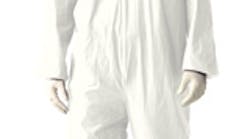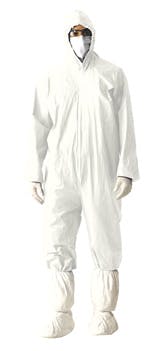Getting Past the "Yuck" Factor
by DIANE PAZ, RDH, EF, BSDH, MEd
The International OCD Foundation estimates that about one in 100 adults and one in 200 children have OCD.1
The number of children with OCD is comparable to the number of children with diabetes. That means four or five children with OCD are likely to be enrolled in any average elementary school.
As clinicians, we need to be cognizant that not all patients are aware of the stringent measures we take to ensure their safety. It behooves the hygienist to discuss any issues with the patient to assure them that we are aware of their concerns and address them politely and without judgment.
I'd like to believe that we all are current with OSHA (Occupational Safety and Health Administration) standards and infection control recommendations, but what does that mean to a dental patient who is overly concerned with germs? For them, this can be the ultimate challenge in addition to whatever concerns they have about the actual dental procedure.
The Mayo Clinic defines OCD as an anxiety disorder characterized by unreasonable thoughts and fears (obsessions) that lead one to do repetitive behaviors (compulsions).2 Obsessive-compulsive disorder often centers on themes, such as a fear of getting contaminated by germs. To ease one's contamination fears, one may compulsively wash one's hands until they're sore and chapped. Despite these efforts, thoughts of obsessive-compulsive behavior keep coming back. This leads to more ritualistic behavior -- and a vicious cycle that's characteristic of obsessive-compulsive disorder.
We are acutely aware of the chain of asepsis protocol that we so diligently practiced in dental hygiene school, but how do we project that competency to our patients? I recently had a discussion with a friend afflicted with this disorder and was surprised to hear how she perceives the world around her.
My friend is a 45-year-old female. She works full-time in a business office and reports having been aware of her OCD for about the past 15 years. On a daily basis, she is able to function without too much intrusion. She does not fit the typical definition as defined above. Although she washes her hands frequently, she does not scrub and cause the telltale symptoms of chapped and bleeding hands. In some respects, she feels it is more of a habit rather than the actual removal of any germs. Her home is clean but not sterile, as one might expect. She also has no difficulty at her job or touching people (as actor Howie Mandel appears to experience). She carries hand sanitizer but does not overuse it.
She reports that it is more of a "disgusting yuck factor" than a fear of catching hepatitis or HIV, as some mental health professionals espouse. Her justification is that people do "disgusting" things such as nose picking or not washing their hands after using the restroom. Her recognition of the "broken chain of asepsis" occurs when those people then touch doorknobs, groceries on a shelf, money, and just about anything else. She then feels that the next person to touch those items will be contaminated. Her rationale is not without warrant. According to the Centers for Disease Control and Prevention:
- Two-thirds of adults in the U.S. wash their hands after using the bathroom
- 1 in 4 adults don't wash their hands after changing diapers
- Less than half of Americans wash their hands after cleaning up after pets
- 1 in 3 people wash their hands after sneezing or coughing
- Less than 1 in 5 people wash their hands after touching money
- 1 in 3 E. coli occurrences is caused from not washing hands before handling food3
And according to the British Food and Drink Federation:
- The number of germs on your fingertips doubles after you use the toilet, yet up to half of all men and a quarter of women fail to wash their hands after they've been to the toilet
- 1,000 times as many germs spread from damp hands than dry hands
- If you wear a ring there could be as many germs under it as there are people in Europe -- millions of germs hide under watches and bracelets4
Although we cannot control those behaviors in others, we can alleviate some of the OCD patients' concerns by demonstrating patience and understanding. A few suggestions might be:
- Be certain that the patient can see you wash your hands and put on a new mask and gloves. Keep your gown and scrubs stain free.
- Show them the unopened sterilized package or cassette of instruments.
- Let them know that things like prophy cups and saliva ejectors are disposable or sterilized for their protection.
- Make sure the operatory looks and smells clean. Make certain all touched surfaces are covered.
- Be sure that the underside of your "over the chest" delivery system is clean with no dust, residue, or bio burden.
- Recline in your own patient chair and see what they see. Is the ceiling in good repair
While this will not allay all fears, the goal will be to make your patient feel as comfortable as possible while in your office. Be aware that there are varying degrees of OCD, and for some, even venturing out of their home is impossible.
OCD is common. Many people are embarrassed to admit they have these feelings, but to some extent, we all probably experience some level of discomfort when thinking about certain situations and the germs that we may encounter. The best advice in general is to wash your hands frequently and avoid touching your nose, mouth, and eyes. Another fact to remember is that we need billions of germs in our bodies. For most of our lives they create a balance. We can live with some bad germs because they are balanced with the good germs.
Vaccinations have worked because they put good germs in our bodies that help build antibodies to fight bad germs. Our immune systems can be overwhelmed when there are too many bad germs, but if there are not enough, then the body gets no practice in fighting them off -- this is the case with people who use hand sanitizer frequently.
When the Europeans came to America, they brought with them germs and diseases that were unknown on the American continents. Because they hadn't existed among the indigenous populations, those people had not been able to build up antibodies and immunities to these diseases. They were less able to fight the germs and more likely to die when they got sick.
We have had an ability to fight off germs and disease. That would explain why, even though we do get sick, we are not all sick and dying from touching the tens of thousands of shopping carts that we have all touched in our lives. Would we be able to do this as well after a lifetime of hand sanitizers, assuming they really work? Just a thought. RDH
References
1. International OCD Foundation. How many people have OCD? International OCD Foundation. Available at: http://www.ocfoundation.org/prevalence.aspx. 2012.
2. Mayo Clinic. Obsessive-compulsive disorder (OCD) Definition. Mayo Clinic. Available at: http://www.mayoclinic.com/health/obsessive-compulsive-disorder/DS00189. 2012.
3. HealthReach Community Health Centers. National hand washing awareness week: December 4-10. HealthReach Community Health Centers. Available at: http://www.healthreachchc.org/news/healthTip.php?IDT=39. 2012.
4. Sustain: The alliance for better food and farming. Hygiene fact file. Sustainweb. Available at: http://www.sustainweb.org/pdf2/Hygienefactfile.pdf. 2012.
Diane Paz, RDH, EF, MEd, earned her CDA and RDH from Phoenix College and her BSDH, expanded functions, and master's degree in education from Northern Arizona University.She is currently an assistant clinical professor at Northern Arizona University, instructing in the bachelor of science degree completion program. She can be reached at Diane.Paz@ nau.edu.
Past RDH Issues







